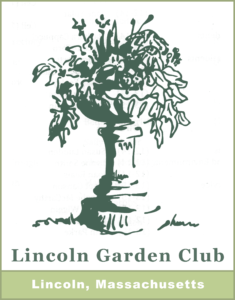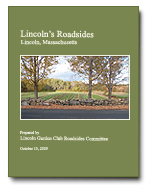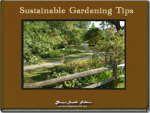All About Composting
Courtesy of Gardener’s Supply Company www.gardeners.com
Compost is a rich and crumbly blend of partially decomposed organic material that does wonderful things for your garden. Building and maintaining a compost pile is the surest, easiest way to become a better gardener. Not only will you be producing the best possible food for your garden, but by watching leaves, eggshells, orange rinds, and grass clippings become transformed into rich compost filled with earthworms and other soil creatures, you’ll be creating healthy soil as well as doing your part for recycling.
Compost improves soil structure. Compost will improve soil texture, water-holding capacity, and fertility. Your soil will gradually become fluffy and brown—the ideal home for healthy plants.
Compost provides a balanced source of plant nutrients. No commercial fertilizer, even one that is totally organic, provides the full spectrum of nutrients that you get with compost. The nutrients are available gradually, as your plants need them, over a period of months or years. Compost stimulates beneficial organisms. Compost is teeming with all kinds of microorganisms that help convert soil nutrients into a form that can be readily absorbed by your plants. The microorganisms, enzymes, vitamins and natural antibiotics that are present in compost actually help prevent many soil pathogens from harming your plants.
Can a gardener ever have enough compost? It’s doubtful. Compost is the perfect thing to spread around when you are creating a new garden, seeding a new lawn area, or planting a new tree. Compost can be sprinkled around plants during the growing season or used as a mulch in your perennial gardens. You can add compost to your flower boxes and deck planters. You can also use it to enrich the potting soil for your indoor plants.
An active compost pile contains four elements:
Carbon. Carbon-rich materials are the energy food for microorganisms. You can identify high-carbon plant materials because they are dry, tough, or fibrous, and tan or brown in color. Examples are dry leaves, straw, rotted hay, sawdust, and cornstalks.
Nitrogen. High-nitrogen materials provide the protein-rich components that microorganisms require to grow and multiply. Freshly pulled weeds, fresh grass clippings, over-ripe fruits and vegetables, coffee grounds and other moist green matter are the sorts of nitrogen-rich materials you’ll probably have on hand. Other high-protein organic matter includes kelp meal, seaweed, manure and animal by-products like blood or bone meal.
Water. Moisture is very important for the composting process. But too much moisture will drown the microorganisms, and too little will dehydrate them. A general rule of thumb is to keep the material in your compost pile as moist as a well-wrung sponge. If you need to add water (unchlorinated is best), insert your garden hose into the middle of the pile in several places, or sprinkle the pile with water next time you turn it. Using an enclosed container or covering your pile with a tarp will make it easier to maintain the right moisture level.
Oxygen. To do their work most efficiently, microorganisms require a lot of oxygen. When your pile is first assembled, there will probably be plenty of air between the layers of materials. But as the microorganisms begin to work, they will start consuming oxygen. Unless you turn or in some way aerate your compost pile, it will run out of oxygen and become sluggish.
That being said, turning a compost pile can be a back breaking job, and if a mixture of carbon and nitrogen is present, turning is not necessary unless you are in a big hurry.
Composting doesn’t need to be complicated. All organic matter breaks down eventually, no matter what you do. If you simply use about 3 times as much “brown” materials as “green” materials, you’ll be off to a great start. A layer of woody materials, pruned branches for example, at the bottom when you start will help keep the pile aerated.
Things to Avoid Putting in Your Compost Pile.
Meat, fish, cheese and bread products which can attract unwanted critters.
Banana peels. They are sprayed heavily – even organic ones – when they are shipped.
Any plant materials, or grass clippings that have been sprayed or treated with chemicals.
Invasive plants: garlic mustard, knotweed, bishop’s weed for example. Unless your pile is very hot, and turned regularly, these plants, or their seeds, will survive and show up later in your garden.
Types of Composters.
Plastic Stationary Bins. Most units feature air vents along the sides and are made from recycled plastics. Look for a lid that fits securely, and doors to access finished compost. Size should be approximately 3 feet square.
Tumbling or Rotating Bins. These composters, are for making batches of compost all at one time. You accumulate organic materials until you have enough to fill the bin, then load it up and rotate it every day or two. If materials are shredded before going into the bin, and you have plenty of nitrogen, you can have finished compost in five weeks or less.
Wire Bin, like the one used at Station Park from Gardener’s Supply. Use an 11-foot length of 2-inch x 4-inch x 36-inch welded, medium-gauge fence wire from your local hardware or building supply store. Tie the ends together to form your hoop. A bin this size holds just over one cubic yard of material. Snow fencing can be used in a similar fashion.
Trash Can Bin. To convert a plastic trash can into a composter, cut off the bottom with a saw. Drill about 24 quarter-inch holes in the sides of the can for good aeration. Bury the bottom of the can from several inches to a foot or more below the soil surface and press the loosened soil around the sides to secure it. Partially burying the composter will make it easier for microorganisms to enter the pile.
Block or Brick or Stone Bin. Lay the blocks, with or without mortar, leaving spaces between each block to permit aeration. Form three sides of a 3-to 4-foot square, roughly 3 to 4 feet high.
Wood Pallet Bin. Discarded wooden pallets from factories or stores can be stood upright to form a bin. Attach the corners with rope, wire, or chain. A fourth pallet can be used as a floor to increase air flow. A used carpet or tarp can be placed over the top of the pile to reduce moisture loss or keep out rain or snow.
Two or Three Bay Wood Bin
Bins should be at least 36 x 36 x 36 inches. Be sure to allow air spaces between the sidewall slats, and make the front walls removable (lift out slats) for easy access.
A two bin system is very easy. One bin is filled for six months, and then left for six months while you fill the other bin. After a year you will have a full bin of compost every six months to use in your garden.
For more information
Let It Rot by Stu Campbell (Garden Way Publishing, 1990)
The Rodale Book of Composting by Deborah Martin and Grace Gershuny (Rodale, 1992)
Worms Eat My Garbage by Mary Appelhof (Flowerfield Press, 1997)


